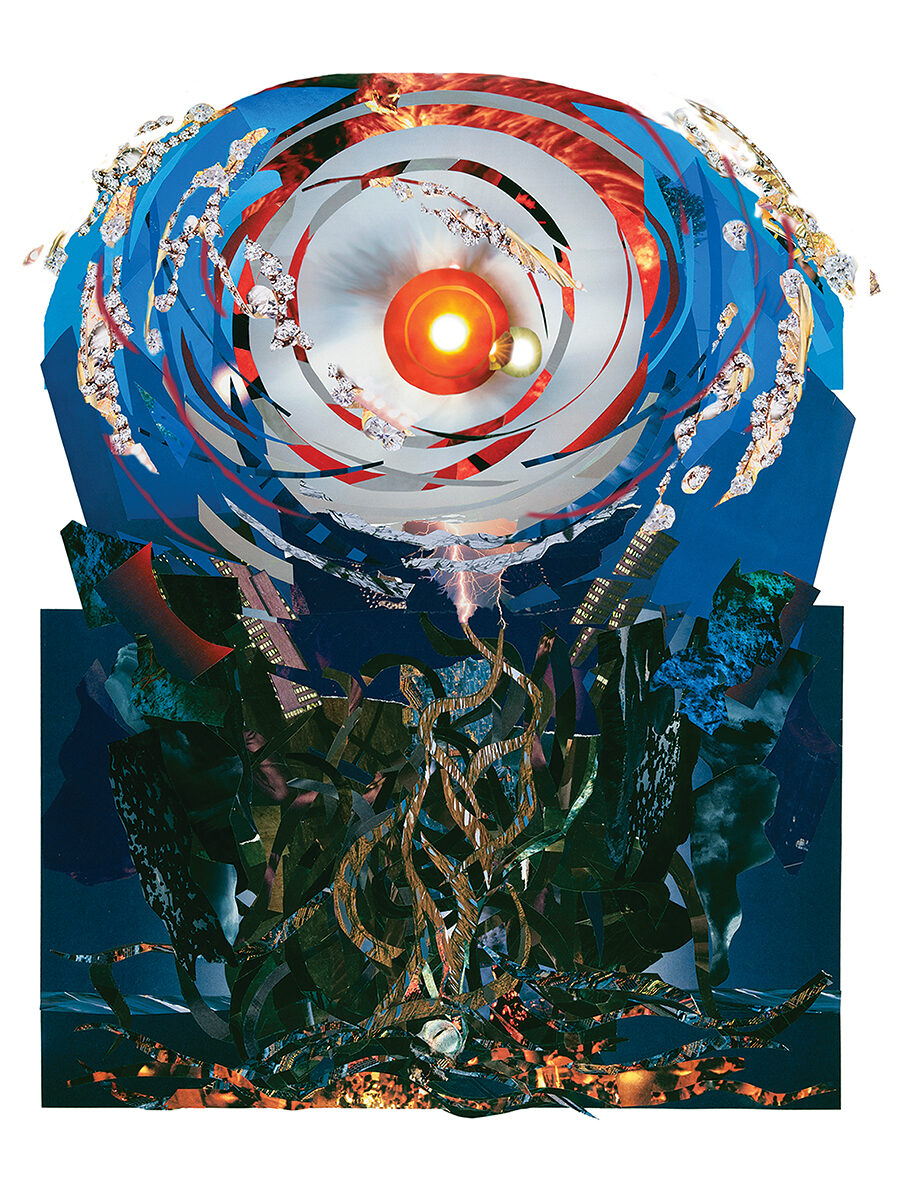
Kiss the Son (detail, center panel of triptych), by Nicora Gangi © The artist
I first read the Book of Revelation in a green pocket-size King James New Testament published by the motel missionaries Gideons International. I was in seventh grade. I remember reading the tiny Bible in the hallway outside my chemistry classroom, in which lurked a boy I loathed named Glenn, who would make fun of my Journey T-shirts. It would be years before I really got into Iron Maiden, but at my friend Jonathan’s house I’d heard Barry Clayton’s creepy recitation of Revelation 13:18 on the title track of The Number of the Beast: “Let him who hath understanding reckon…






















































































